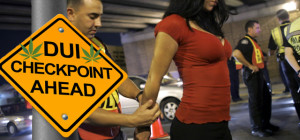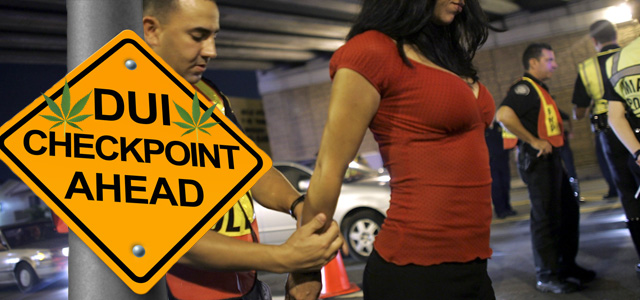Who would you rather have behind the wheel? A teetotaler, a stoner or a drunk?
Pretty much everyone would pick the sober driver, pretty much every time. But take that person out of the question and who would you choose? If you know anything about highway fatalities and impaired driving, you’d pick the pothead – again, every time.
 That’s because alcohol causes 28 percent of all traffic fatalities in California. And that’s a good number: The average nationally is 31 percent. The figure for marijuana-related driving fatalities? Less than 4 percent.
That’s because alcohol causes 28 percent of all traffic fatalities in California. And that’s a good number: The average nationally is 31 percent. The figure for marijuana-related driving fatalities? Less than 4 percent.
It’s important to keep another statistic in mind: Roughly the same percentage of drivers tested positive for alcohol and marijuana during a statewide roadblock testing program in 2012. So the 7.3 percent of drivers who tested positive for alcohol caused 28 percent of fatalities while the 7.4 percent who tested positive for marijuana caused just 3.5 percent.
Yet you wouldn’t know that from the endless cries for punitive driving laws. These policies treat cannabis like a roadway menace equal to booze, ignoring all science and penalizing even drivers who are completely sober.
They’re called “per se” laws, and they’re especially popular with police groups that oppose legal weed. The idea is that the detection of a certain amount of THC in your bloodstream proves you were impaired. In some states, including Arizona, “zero tolerance” applies: Detection of any THC can lead to conviction for a DUI.
There are many problems with this approach, the least of which is the mistaken belief that weed leads to the same impairment as alcohol. It also creates a problem unique to cannabis: THC metabolites can remain in the system for days or even weeks. It’s almost certain people will be convicted of DUIs for driving days after smoking.
And it’s medical users who are most at risk, especially since both California and Arizona allow medical pot. MMJ patients who use heavily typically build up tolerance to the drug, so even if they have a large amount of THC, it won’t have the same impairing effect on them. Some patients may be able to smoke frequently and still drive safely. Yet per se laws take no account of that possibility.
They also take no account of other facts per se supporters don’t like to acknowledge. For one, though California’s traffic raw fatality numbers increased in 2011, they did so by just 2.6 percent, “one of the lowest levels since the federal government began recording traffic fatalities in 1975.”
The state’s Mileage Death Rate for 2010, which tracks the number of fatalities per 100 million miles traveled, was 0.84, much better than the national number, 1.1.
All this happened during the years MMJ was legal in California. Voters approved it by referendum in 1996. During the following years, alcohol-related traffic fatality rates spiked, peaking in 2007 and dropping after, during the same period in which public acceptance of weed increased dramatically.
Nonetheless, the state will lead the nation in number of sobriety checkpoints, and now drivers will be asked to give up saliva so the police can test for marijuana. As for now, the state has no per se law, so prosecutors must prove a driver was actually impaired, but police lobbies are working hard to enact a zero tolerance bill that would throw countless innocent medical users in jail.
 California Marijuana Market Breaking "Marijuana News" from CA
California Marijuana Market Breaking "Marijuana News" from CA


